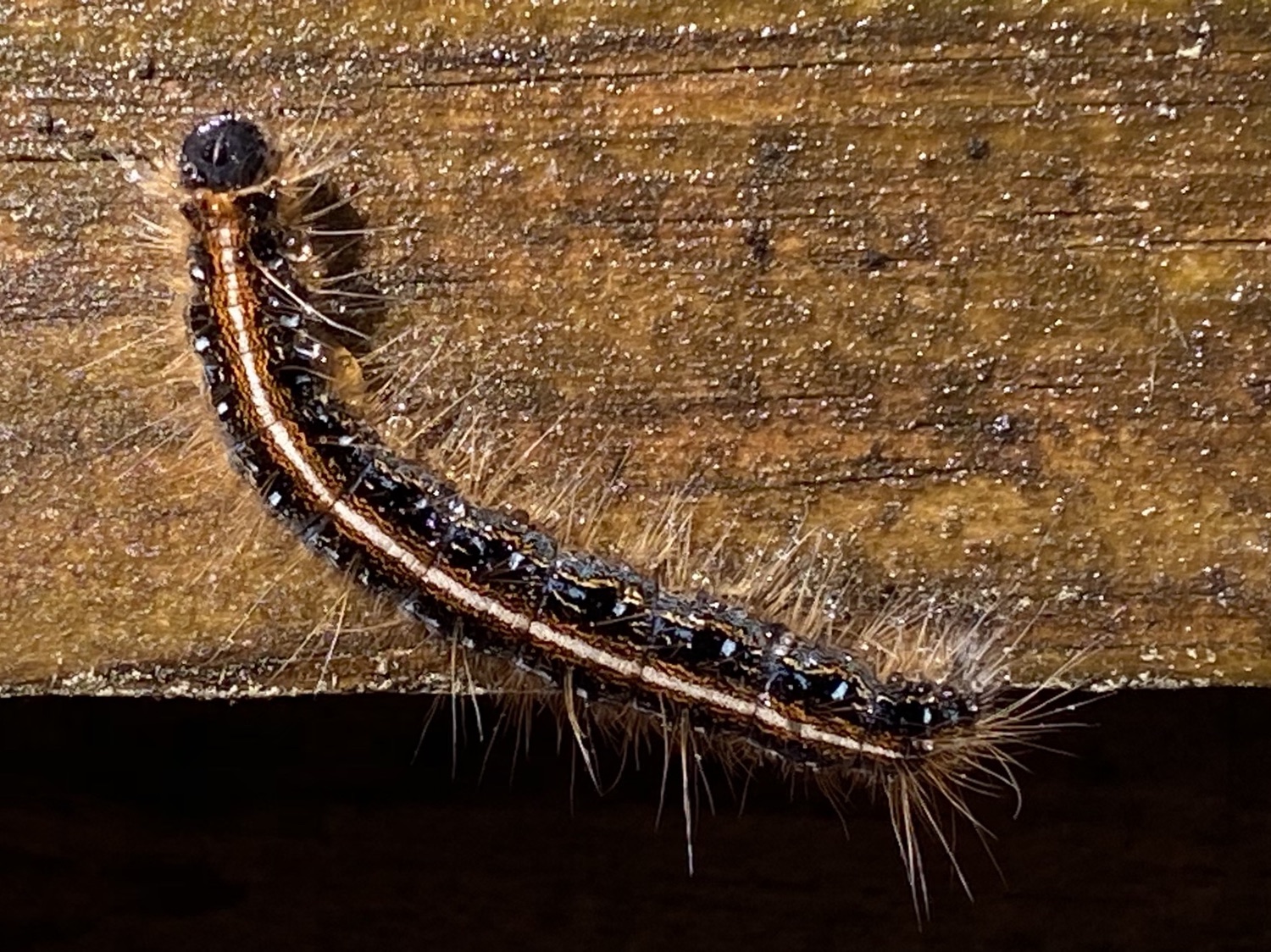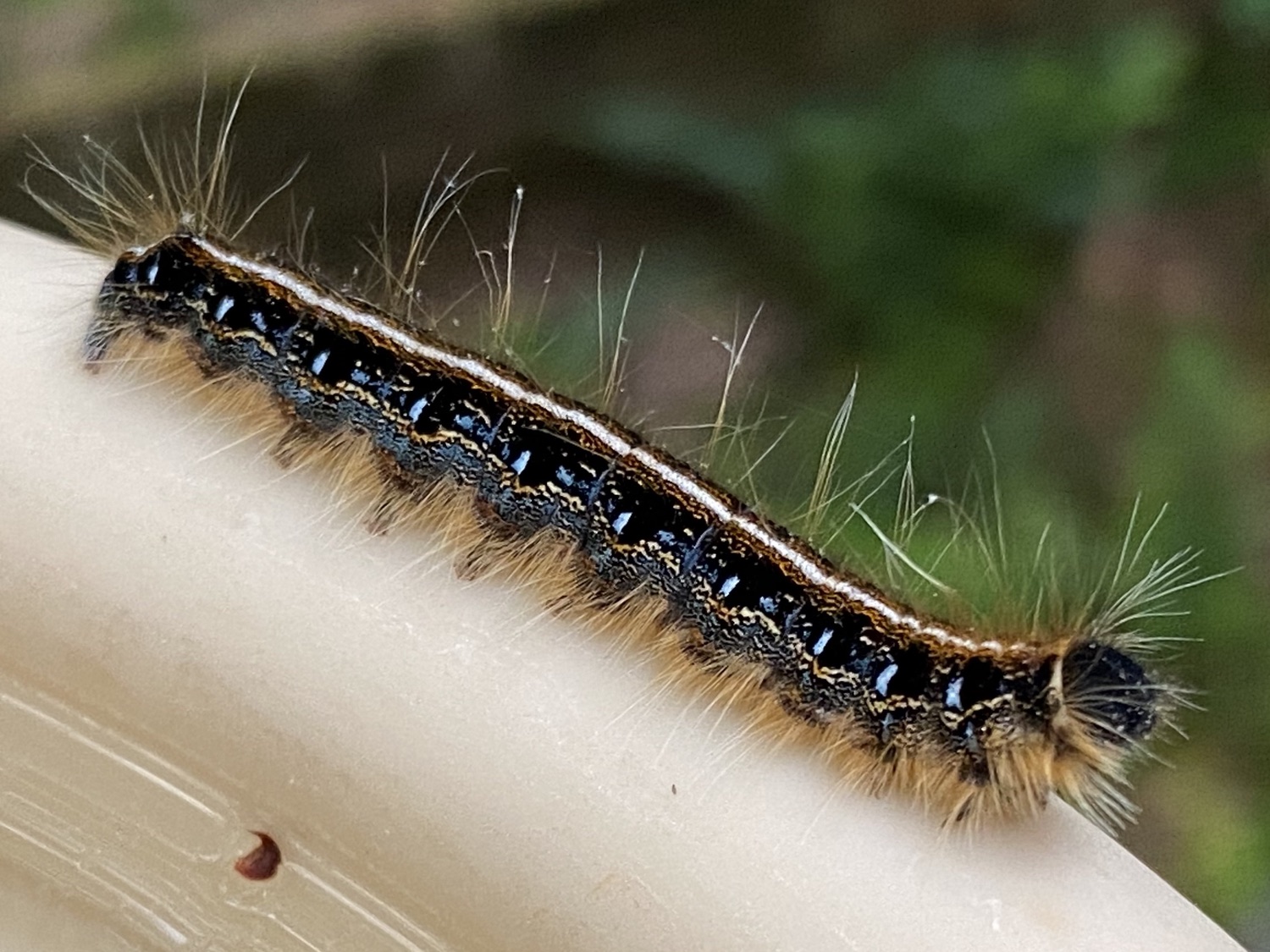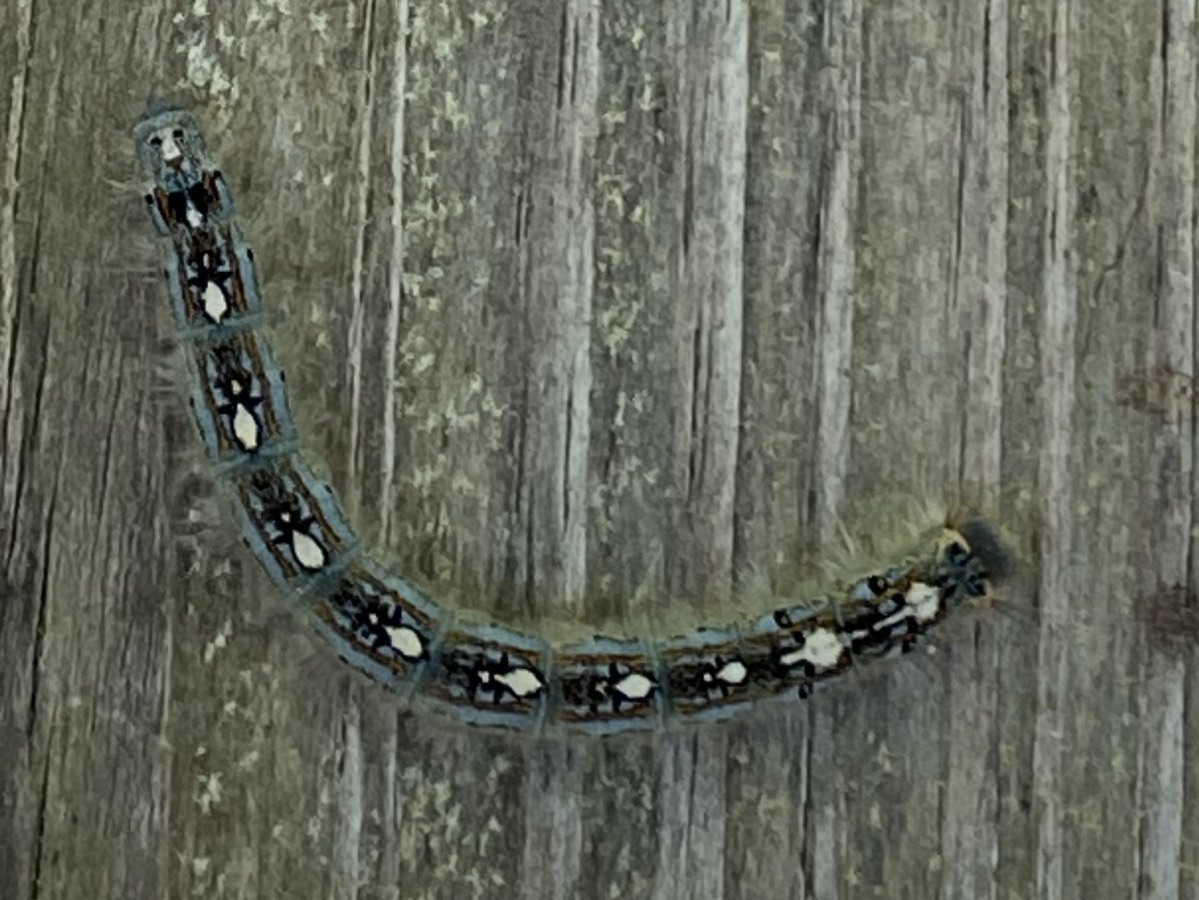SPRING CATERPILLARS
4/18/20
Although late summer and fall is usually the bonanza time for caterpillars here in the Piedmont, I’ve seen many caterpillars the past two weeks. Both are species of tent caterpillars.
The first is the Eastern Tent Caterpillar (Malacosoma americanum). It has a large black head, and a dark body with a central white stripe flanked by brown stripes. The sides of the body are covered with long golden-white hairs. The body is a couple of inches long.

In dimmer light, the pretty blue spots along the sides are easier to see.

The second is the Forest Tent Caterpillar (Malacosoma disstria). The flanks of the body are a beautiful blue with thin yellowish, black, and dark orange stripes. The body is a couple of inches long. The lower sides of the body has tufts of shorter white hairs.

The top of the body has a complex pattern of black and blue with large white splotches, the fat ends of which point toward the head (right side on this one). The head is dark, but not as large as that of the Eastern Tent Caterpillar.

Wagner (2005) reports that the Eastern Tent Caterpillar eats apple, cherry, hawthorn, and other members of the rose family. I’ve seen a small cherry tree across our street, but none of the others in our yard, so I’m not sure yet what it would be eating. For the Forest Tent Caterpillar, we have many of the plants that Wagner (2005) says it eats: ash, basswood, elm, maple, oak, poplar, and black gum. Although the Eastern Tent Caterpillar builds the familiar silken nests where branches split, the Forest Tent Caterpillar does not, but they do aggregate on tree trunks in masses of over 100 caterpillars lined up side by side. I’d like to see that!
Reference
Wagner, D.L. 2005. Caterpillars of Eastern North America. Princeton University Press, Princeton, New Jersey.